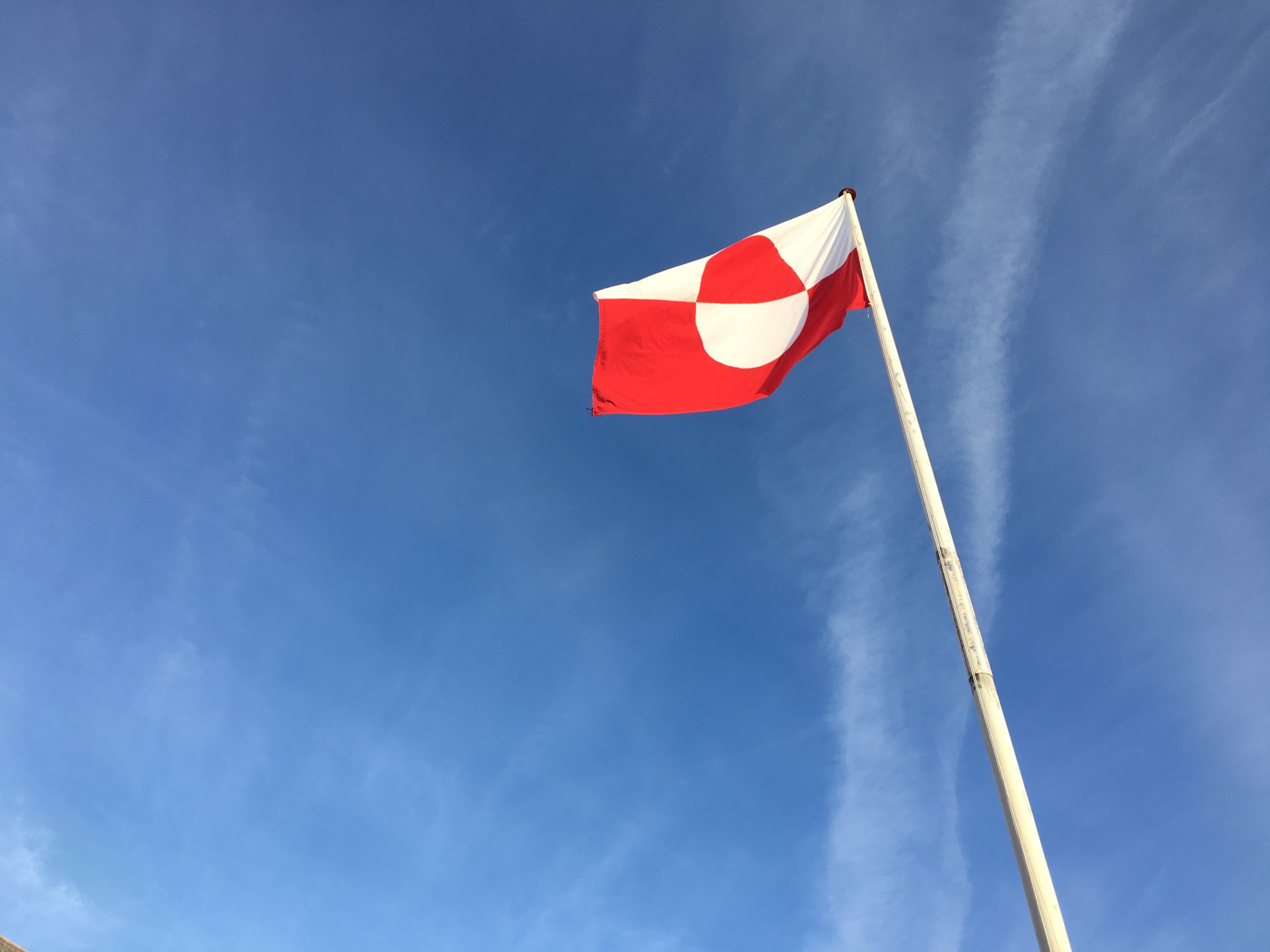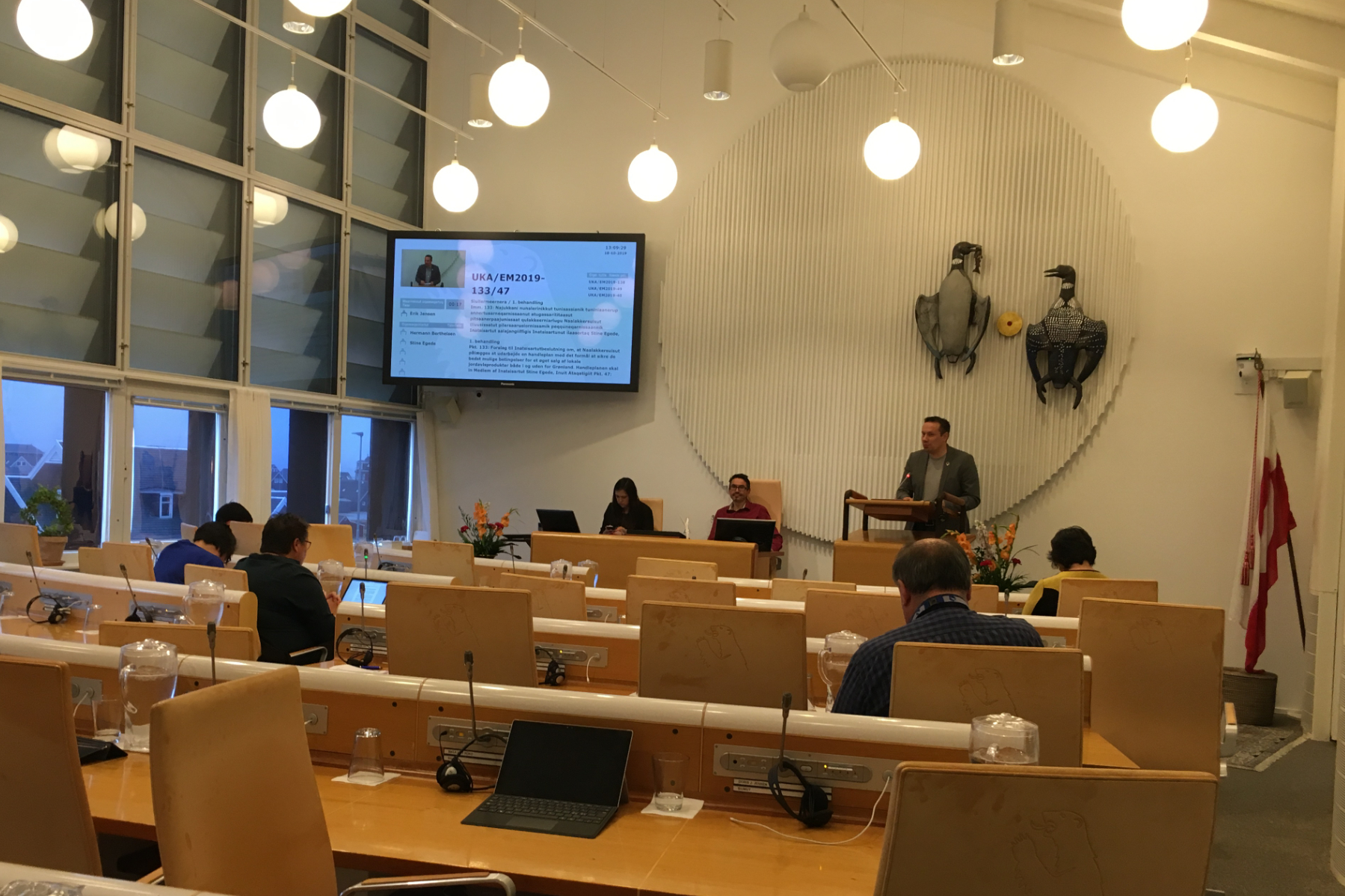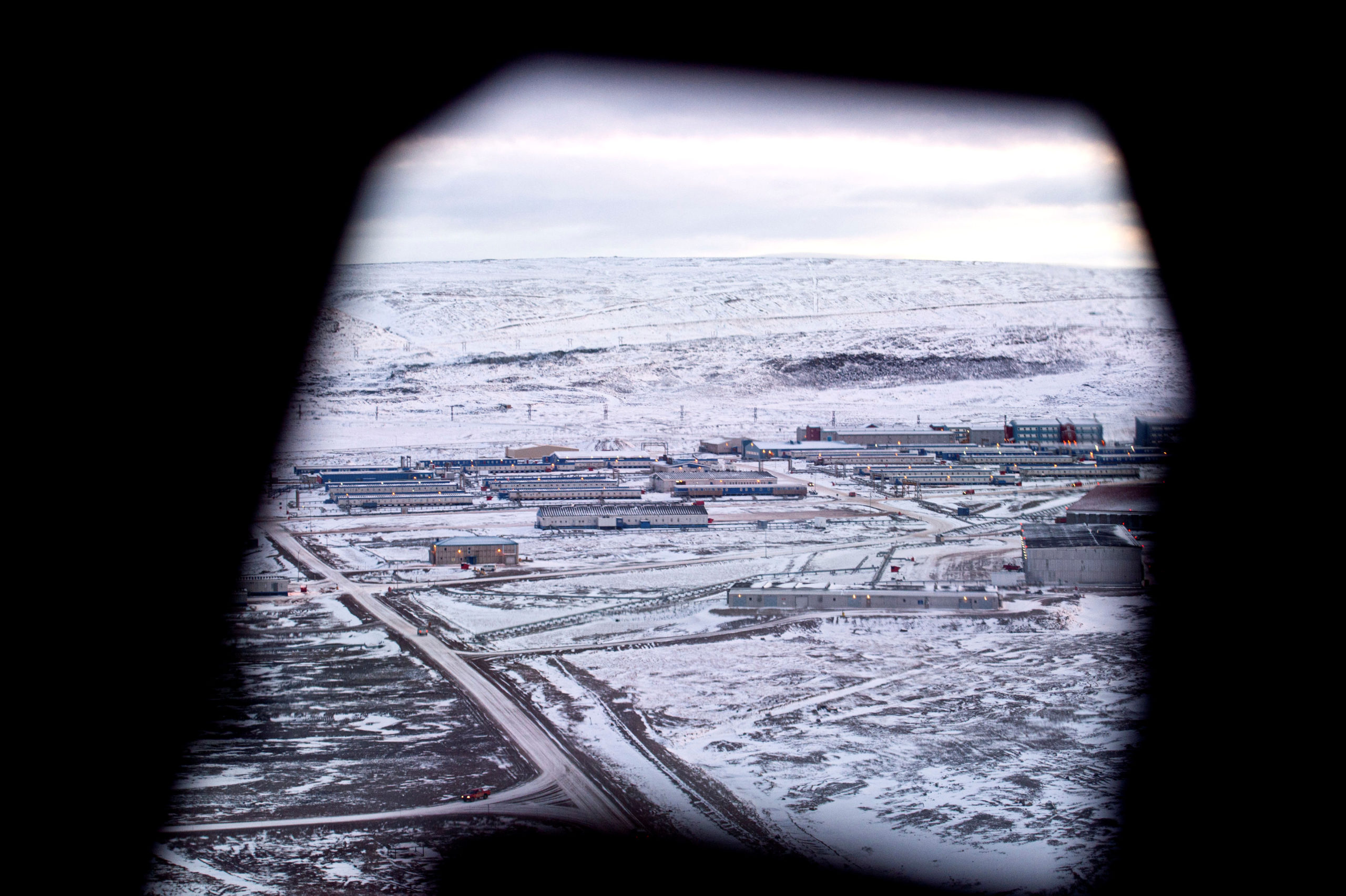The US aid package to Greenland marks a new chapter in a long, complex relationship
The promise of $12.1 million leaves a lot of questions to be resolved — including the future of the U.S.-Denmark-Greenland relationship.

There are multiple ways to seek to understand what a new aid package from the U.S. to Greenland announced last week means. But one of the most instructive might be to start with the diplomatic war of words the news kicked off in Copenhagen.
In announcing the deal, U.S. Ambassador Carla Sands, in a message on Altinget.dk, a Danish news portal, and on her embassy’s website presented the U.S. aid package to Greenland as a direct result of a shift in U.S. Arctic policy:
“While Greenland stands on the cusp of a new era of productivity, governments who operate by different standards are looking to exploit opportunities to bring their authoritarian set of values to the future development and governance of the region,” she wrote.
[With a $12.1 million offer to Greenland, America is playing softball in the Arctic]
“Russia’s pattern of aggressive behavior and increasing militarization in the Arctic is a looming global concern (…) In 2018, Russia opened an Arctic airfield at Nagurskoye which can accommodate bombers capable of reaching Thule Air Base in Northwest Greenland with little to no warning,” the ambassador wrote, still saving steam for a blast at China, which eventually stood out as her main target:
“The People’s Republic of China (PRC) calls itself a “near Arctic state” even though nearly 1,500 kilometers separate the Arctic and China. The PRC is trying to insinuate itself into the region because it sees the Arctic as another place to advance its predatory economic interests and project its authoritarian values. It is attempting to gain a physical foothold in the region by building icebreakers, including working on a nuclear-powered icebreaker, deploying unmanned ice stations, and engaging in large and sophisticated data collection efforts in countries throughout the region, including the United States, Iceland, Greenland, and Canada,” she wrote.
Speaking on Friday, an unnamed U.S. State Department official in Washington, also took aim at Russia and China:
“It’s a change that’s driven by the desire of Russia and the People’s Republic of China to challenge the United States and the West. We see this playing out in other parts of the world. The Arctic is not immune from the implications of these changes and we can expect, as you all probably know, the rapidly changing Arctic system to create greater incentives for the Kremlin and the PRC to pursue agendas that clash with the interests of the United States and our allies and partners,” the official said in a media briefing.
The reaction from the Russian ambassador to the Kingdom of Denmark, Vladimir Barbin, arrived as a carefully contemplated whiplash, a stark breath of numbingly cold air.
In a retort published in Politiken, a Danish daily, Russia’s envoy to Copenhagen wrote as follows:
“Now, the United States instead of dialogue and cooperation relies exclusively on the policy of confrontation in the region, hoping thereby to achieve dominance in this part of the world.”
[Russian envoy to Denmark says US undermines Arctic peace]
“The attempts by the U.S. to divide the Arctic nations and create coalitions among some countries against others worsens the situation in the region and undermines the Arctic nations’ leadership in maintaining peace, security and international cooperation in the Arctic,” Barbin wrote.
Worry adds to worry
Barbin was Russia’s Senior Arctic Official for four years until posted to Copenhagen in 2019. He knows the recent history of the Arctic and obviously worries what comes next, and his worries have added to those which surfaced in Copenhagen and Nuuk as soon as the U.S. aid package was announced.
Barbin’s reply also underscored to anyone who cares, how the aid package cannot be seen out of its geopolitical context — not even if one is positively inclined and supportive of economic development in Greenland, international cooperation and so forth.
Naalakkersuisut, Greenland’s self-rule government is happy about the aid-package, but several key politicians in Denmark and Greenland — including some who are usually supportive of Denmark’s and Greenland’s long standing alliance with the U.S. — voiced reservations.

Søren Espersen, head of the Foreign Policy Committee of the Danish parliament, called the aid package “an insult.” Rasmus Jarlov, a conservative member of parliament, was similarly perturbed:
“The U.S. is obviously working to undermine the realm. They have had a long leash, but there has to be a limit, and in the end, they cannot be present in Greenland, if they do not put that agenda away. It is completely unacceptable,” Jarlov tweeted.
[Greenland welcomes US aid, but some lawmakers fear it could bring entanglements]
They remember of course how U.S. President Donald Trump shocked the world last year in August by suggesting the U.S. could possibly buy Greenland — including its 57,000 citizens, wildlife and natural resources — from Denmark, which still holds sovereignty over the island.
Trump’s admission is the key to understanding the present turmoil. The question that keeps politicians, analysts and the media busy in Copenhagen as well as in Greenland is whether the aid package should be understood as a slightly more subtle — but still scantily clad — U.S. ambition to take control over Greenland, since such control would be, as Trump put it in 2019, “strategically nice.” Or whether the aid package is merely a benign way to make sure that Greenland remains economically sound and open towards to the United States, American investments and military strategies and thus less inclined to find any future Chinese or other foreign approaches attractive.

Bo Lidegaard, a Danish historian and an expert on U.S.-Greenland relations, reads the aid package as confirmation of an unwavering U.S. wish to ensure that Greenland, geographically a part of the North American continent, does not shift out of U.S. military control:
“To the degree that the ties between Denmark and Greenland may weakening, it will be logical for the U.S. to fill this void. That is what we see today. The fact that Greenland agrees to these investments is a sign that they have become more independent from Denmark, which means, in practice, that they have become more dependent on the U.S.,” he told Kristeligt Dagblad, another Danish daily.
New U.S. consulate
In a telephone briefing with the Danish media Friday last week, Ambassador Sands explained that the aid package should be understood also in light of the soon-to-come reopening of the U.S. consulate in Nuuk, last open in 1953.
She made it clear that the U.S. is embarking on more intense diplomatic efforts in Nuuk among politicians, business leaders and ordinary people. Sands and the coming U.S. envoy to Nuuk, Sung Choi, are already frequent guests in Greenland and from this summer the stars and stripes will fly over Nuuk as only the second foreign flag in town. For years, neighboring Iceland, a country of some 325,000 people, has been the only foreign nation to run a diplomatic mission in Nuuk — in a tiny, wooden old house on the harbor. The U.S. consulate will initially use rooms at Denmark’s Arctic Command, but the aim is to move closer to parliament and Naalakkersuisut, the self-rule government.
To the skeptics the key question will be for some time whether the U.S. remains at heart supportive of the power-sharing arrangement between the U.S., Greenland and Denmark that has served the three partners in Greenland since World War II — or if the U.S. aims to ultimately challenge Denmark’s sovereignty over Greenland. The answer, if ever we find one, has far reaching implications for Greenland, for Denmark and for the Arctic as a whole.
New paths
Sara Olsvig, a former minister of Naalakkersuisut, Greenland’s self-rule government, who is embarking on a Ph.D. on U.S.-Greenland relations, finds that Washington and Nuuk are both breaking new ground with the controversial aid package.
“I believe there is a certain amount of mutual respect for the old trilateral relation between Denmark, Greenland and the U.S., but the U.S. is obviously beginning to realize that one can also have a bilateral relationship with Greenland,” she tells me.
“I have no doubt that both sides are exploring just how far they can go within the existing arrangements. That is not necessarily a challenge to the Danish realm. We have many years of experience with the fact that Greenland is free to negotiate deals with other nations on fish and trade for instance, but I hope that our politicians have made sure that they have a full parliament behind them and that all involved are well informed about the possible consequences,” she says.
Aleqa Hammond, chair of the Foreign and Security Policy Committee of Inatsisartut, the Greenlandic parliament and a staunch supporter of Greenland’s quest for independence, called the aid package “a step in the right direction.”
“This is the first time I see our government present a deal that was negotiated with another country without the involvement of Denmark,” she told KNR, Greenland’s public broadcaster.
The Danish government, surely, would frown at this interpretation. The government in Copenhagen, represented by foreign minister Jeppe Kofod, has expressed only full support for the new U.S. aid-package:
“We think that it is truly fantastic that there is such an engagement from the U.S. in Greenland. This is something we have worked with Greenland to secure for a long time,” Kofod told the Danish Broadcasting Corporation.
Formally, the U.S. has broken no rules by entering into a binding accord about the aid package directly with Greenland’s self-rule government in Nuuk — and not with the government in Denmark.
It is not widely known outside Greenland, not even in Denmark, but according to an arrangement with Denmark from 2005 and the 2009 Act on Greenland’s Self Rule, passed by the parliaments of both Denmark and Greenland, the local government in Nuuk may freely — on behalf of the Kingdom — enter into binding agreements with other governments on mining, tourism, fisheries and other civil and commercial activities, as long as the government in Denmark is kept fully informed, and Sands and Kofod have declared repeatedly in recent last days that Copenhagen has been thoroughly briefed all along.
Funds to remain in the U.S.
The $12.1 million in the aid package will not go to the national treasury in Greenland. According to Nuuk, the funds are to be administered by the U.S. State Department and allocated for use in Greenland to programs and projects that are to be designed between U.S. government agencies, including USAID, and their counterparts in Nuuk.
Based on two formal U.S.-Greenland agreements from the summer of 2019, the funding will primarily be spent on strengthening Greenland’s tourism industry, the mining sector and for educational purposes. Details are not available, but it appears that at least part of the money will go to U.S. consultants on visits to Greenland. There is no guarantee that all the money will be spent in the initial project period which runs until the end of 2021, but the accord comes with possible extension and more funds in the future.
A less promising history
Greenland has for years aimed to reduce its dependency on Denmark by entering into still more substantial relations with other countries and foreign institutions — the U.S., China, Canada, the EU, the Nordic Council and others. In 2014, Greenland established its first diplomatic office in Washington to attract U.S. investments and interest, and it was no surprise when the head of Naalakkersuisut, Kim Kielsen made sure to give Greenland’s own diplomatic efforts part of the credit for the aid package:
”With this good news it is confirmed that our effort to build a constructive relation with the U.S. bears fruit,” a formal press announcement said.
It is also worth remembering that the U.S. promised substantial support for Greenland already in 2004 when U.S. Secretary of State Colin Powell, his Danish counterpart Per Stig Møller and a member of Greenland’s government ,Josef Motzfeldt, signed the so called Igaliku Accords in Greenland.
The accords secured a green light for further upgrading of the U.S. Air Force’s military radar at Thule Air Base in the north of Greenland. Greenland in return became a formal part of future negotiations on U.S. military activities in Greenland and received a promise of: “broad economic and technical cooperation” in the fields of “research, technology and energy cooperation, environmental issues, education, development, tourism, air traffic planning and trade.”
But serious disappointment followed this announcement, and promises went unfulfilled.
“If one thinks that Donald Trump’s message in 2019 was the start of U.S. interests in Greenland, one forgets a long history,” says Olsvig.
She also points to a famous contract on maintenance at Thule Air Base, which Greenland benefitted from for decades until it was lost to an American contractor in 2014.
“That loss has been defining for the dialogue with the U.S. ever since. A solution has long been needed, and one has to see the aid package in this light. The question is if Greenland will be satisfied with the amount of funding in the aid package and the way the funds are to handled. The income from the contract at Thule Air Base went directly to the national treasury — also in the form of taxes,” she says.
We may soon know if the U.S. aid-package comes with other strings attached or if the U.S. will attempt to guide more firmly for instance Greenland’s policies towards China.
Kielsen, the head of Naalakkersuisut, speaking on television earlier this week in Greenland, said that Greenland would not be pushed and that his country remains open for business with all nations as long as they follow local rules and regulations. A handful of Chinese companies have interests in potentially important mining operations in Greenland and Greenland’s exports of seafood to China has mushroomed in later years.
And Kielsen’s government recently announced plans to open a diplomatic office in Asia.
Most expect it to be located in Beijing.
Martin Breum is a Danish journalist and author based in Copenhagen. He writes regularly on Arctic affairs for ArcticToday.com. Find him at www.martinbreum.dk.
The views expressed here are the writer’s and are not necessarily endorsed by Arctic Today, which welcomes a broad range of viewpoints. To submit a piece for consideration, email commentary (at) arctictoday.com.